Step into the enchanting realm of Hawaii’s untamed animals and wildlife!
Beyond the sun-kissed shores and awe-inspiring peaks, Hawaii beckons as a premier destination with an abundance of captivating features. Here, we delve into the intriguing and extraordinary wildlife that calls the Aloha State home!
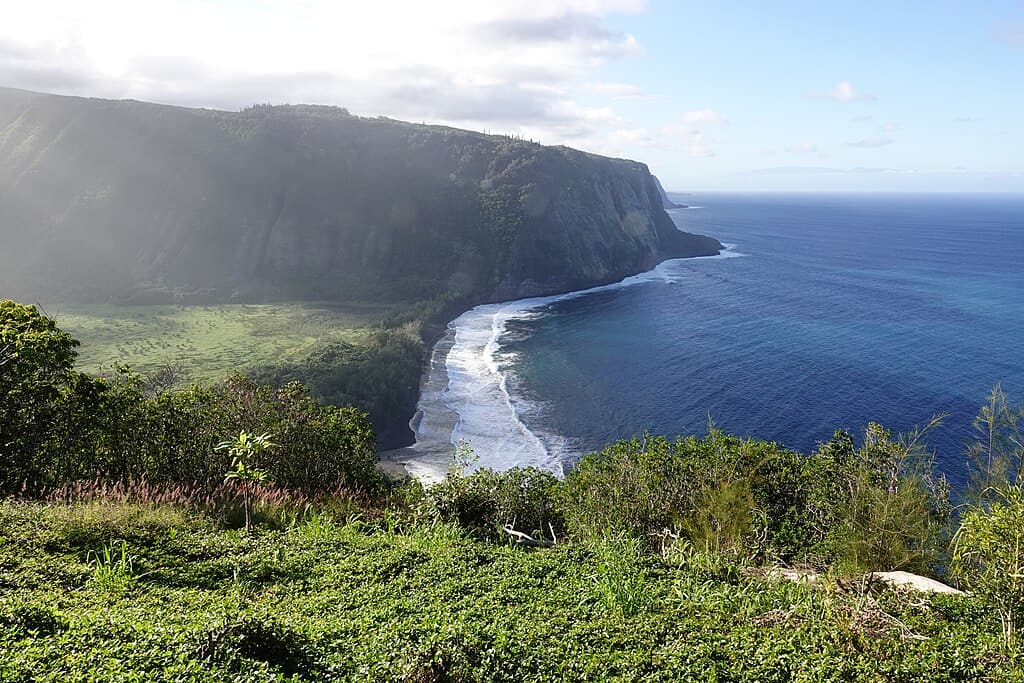
Grab your coconut-shaped binoculars to navigate this quirky blog!
Key points
| Species | Key Points |
|---|---|
| Spinner Dolphins | – Known for spinning leaps out of water |
| – Rest in shallow bays during the day | |
| – Hunt for fish at night | |
| – Live in resident pods | |
| Spotted Dolphins | – Resemble spinner dolphins |
| – Have white-tipped beaks and spotted color patterns | |
| – Explore channels between islands | |
| – Often found in schools | |
| Bottlenose Dolphins | – Larger, uniformly gray dolphins with blunter rostrum |
| – Engage in playful activities like bow riding | |
| – Intelligent and high on the oceanic food chain | |
| – Seen in smaller pods or groups | |
| Hawaiian Hoary Bat | – Endangered species with unique wing shape |
| (Ōpe‘ape‘a) | – Nocturnal and solitary tree roosters |
| – Hard to study due to size and elusiveness | |
| – Studied using ultrasonic bat detectors | |
| Hawaiian Monk Seal | – Rarest seal species, critically endangered |
| – Found only in Hawaii | |
| – Visitors advised to keep a distance | |
| – Seal pups are vulnerable and must not be disturbed | |
| Indian Mongoose | – Non-native species introduced to control rats |
| – Preys on native bird populations | |
| Axis Deer and Mule Deer | – Introduced species, not native to Hawaii |
| – Axis deer on Lanai, mule deer on Kauai | |
| Feral Wallaby | – Wallabies introduced as zoo exhibits, became feral |
| – Feral population in Oahu’s Kalihi Valley | |
| – Classified as Near Threatened | |
| Hawksbill Sea Turtle | – Critically endangered species |
| – Known for feeding on sea sponges | |
| – Targeted for shells, contributing to endangered status | |
| Seabirds of Hawaii | – Hawaiian birds divided into seabirds and forest birds |
| – Seabirds include albatross, frigate birds, noddies, shearwaters, and tropic birds | |
| – Many Hawaiian bird species threatened due to human impact |
Dolphins in Hawaii
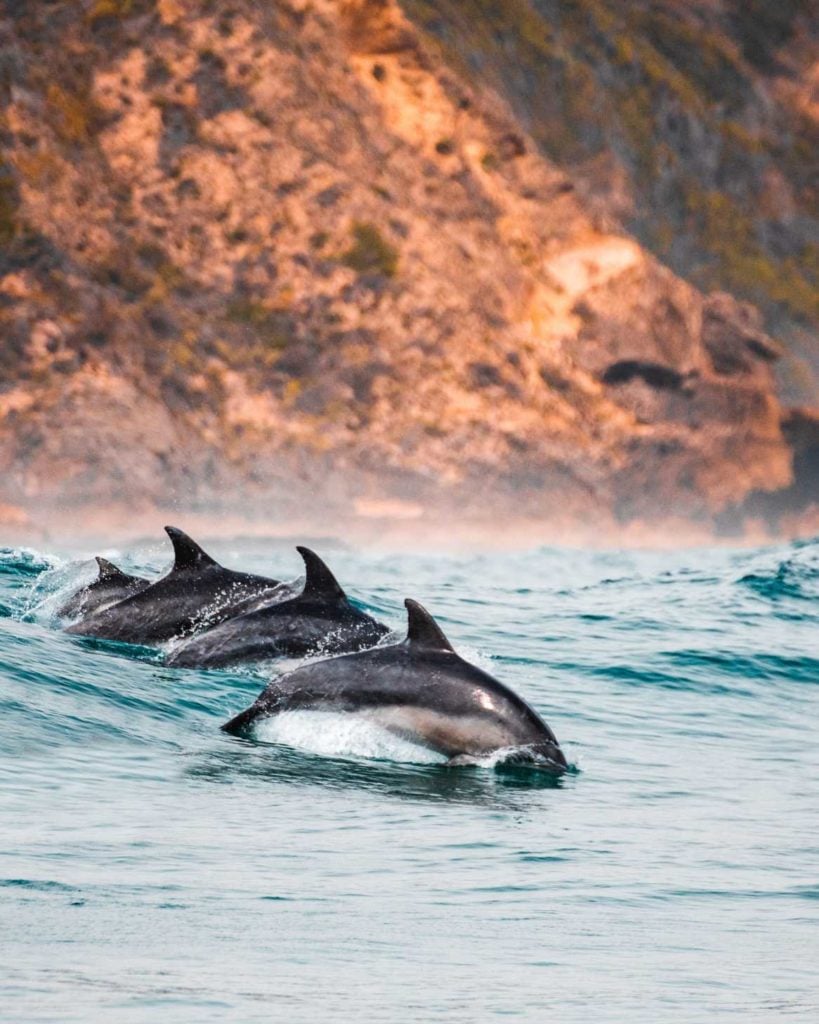
Here are three Dolphin species you can sport in Hawaii:
- Spinner Dolphin
- Spotted Dolphin
- Bottlenose Dolphin
You can read more about where to swim with dolphins with our dedicated article, and if you are even more curious you can read all about how dolphins use echolocation to navigate the ocean!
Spinner Dolphins
Meet the Superstar Swimmers: Spinner Dolphins!
Prepare to be mesmerized as we plunge into the captivating world of the ocean’s most renowned performers: the spinner dolphins (Stenella longirostris). These charming creatures take center stage in Hawaii’s wildlife spectacle, showcasing their flair for entertainment in the most enchanting manner.
Imagine this: following a night of indulging in a gourmet feast beneath the ocean’s depths, these petite, long-snouted dolphins elegantly navigate their way to the shallower coastal regions for some well-deserved daytime relaxation. And guess what? You’re invited to witness their laid-back beachside gatherings!
But that’s not the end of the story—these dolphins boast a show-stopping party trick. Just when you thought they couldn’t get any more impressive, they execute breathtaking spins. I’m not referring to dance floor pirouettes, my friends; I’m talking about spinning around their own axis up to six times in a single leap out of the water. They truly are the life of the underwater celebration!
You can catch these mesmerizing dolphins in resident pods around the primary Hawaiian islands. By day, they lounge in shallow bays, soaking up the sun with the ease of true beach aficionados. However, don’t be fooled by their relaxed demeanor, as come nightfall, they transform into stealthy hunters on the prowl for small schooling fish. Their midnight snacking escapades are a sight to behold!
So, slather on the sunscreen, grab your snorkel gear, and brace yourself for an aquatic extravaganza with the spinner dolphins. They’ll leave you spinning with delight and questioning why humans can’t emulate such impressive water acrobatics.
Spotted Dolphins
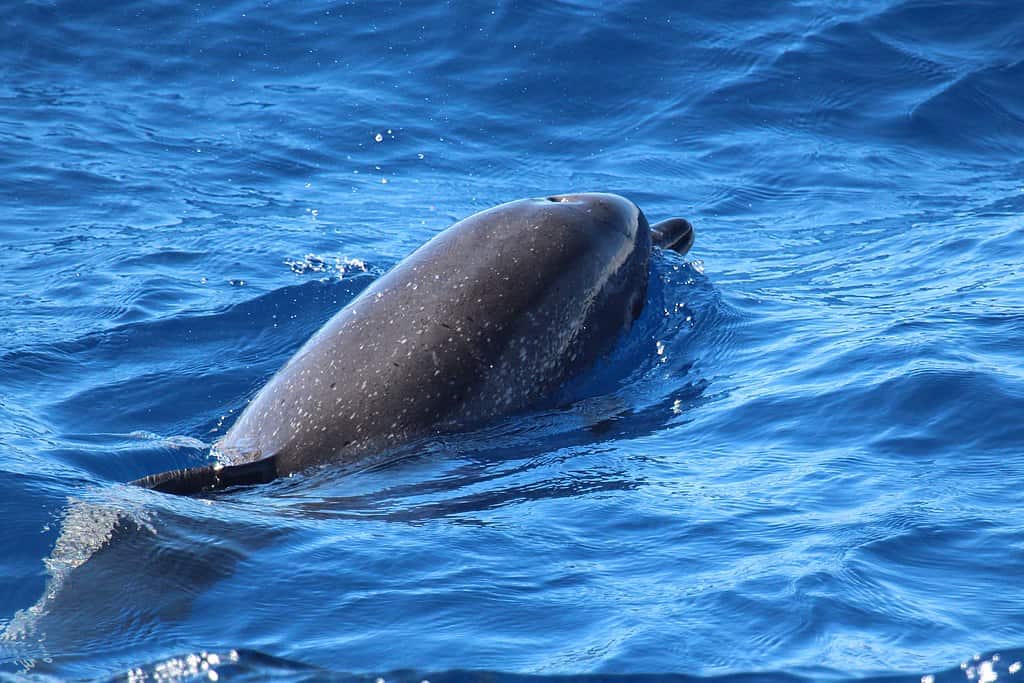
Meet the Lookalikes: Spotted Dolphins!
Folks, fasten your snorkel gear as we embark on an exhilarating journey into the vibrant realm of the spotted dolphins (Stenella attenuata). Keep a keen eye out because these adept creatures are masters at engaging us in a captivating game of hide-and-seek!
At first glance, one might easily mistake them for their well-known relatives, the spinner dolphins—a duo resembling long-lost twins with an uncanny likeness. However, there are distinctive features that set the spotted dolphins apart, ensuring they shine uniquely in the vast expanse.
Watch closely as they glide gracefully through the ocean, sporting a white-tipped beak that serves as their individual fashion statement, adding a dash of flair to their appearance. But that’s not all—mature spotted dolphins showcase a breathtaking spotted color pattern on their bodies, establishing them as the ocean’s trendsetters in a distinctive style reminiscent of leopard print.
While the spinner dolphins revel in their near-shore leisure sessions, the spotted dolphins thrive on exploring the channels between the islands. They embody the spirit of oceanic adventurers, ever on the move and eager for the next thrilling dolphin expedition.
Here’s a fascinating tidbit that might widen your eyes: spotted and spinner dolphins often join forces, “spotted” together in schools ranging from intimate cliques to colossal gatherings of hundreds. Undoubtedly, they are the ocean’s ultimate party animals, unafraid to create a splash!
Bottlenose Dolphins
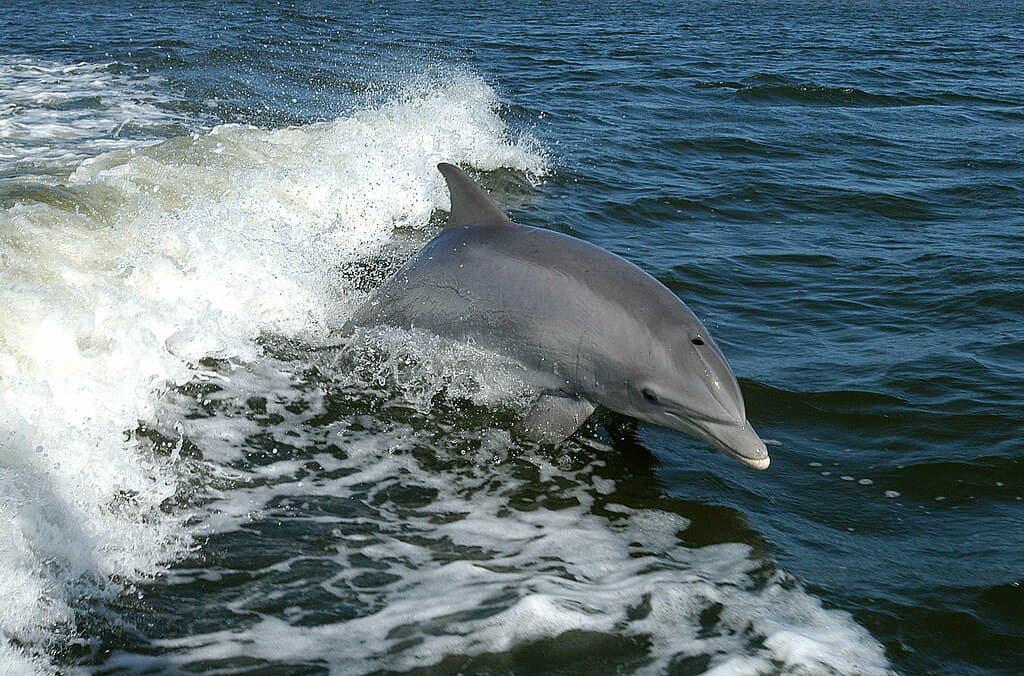
Bottlenose dolphins (Tursiops truncatus) are distinguishable from spotted and spinner dolphins by their much larger size, uniformly gray coloration, and thicker, blunter rostrum.
They are usually seen in smaller pods or groups of less than ten individuals. Intelligent and high up on the oceanic food chain, dolphins engage in playful activities, including bow riding, where they surf in front of a boat or even a whale’s bow wave.
Hawaiian Hoary Bat – Hawaii’s only Native Land Mammal
In the veil of darkness, a proficient hunter gracefully maneuvers through the Hawaiian sky, executing twists and turns, deftly darting and evading trees with acrobatic prowess to secure its evening meal. This elusive nocturnal predator remains shrouded in mystery, with scientists lacking an estimate of its population size. Remarkably, beyond the scientific community, few are aware of the existence of Native Hawaiian bats.
In the era predating human arrival, species reached Hawai‘i through one of three means: riding the wind, traversing water, or taking flight (either independently or carried by winged companions). It logically follows that the sole native land mammal would be adorned with wings.
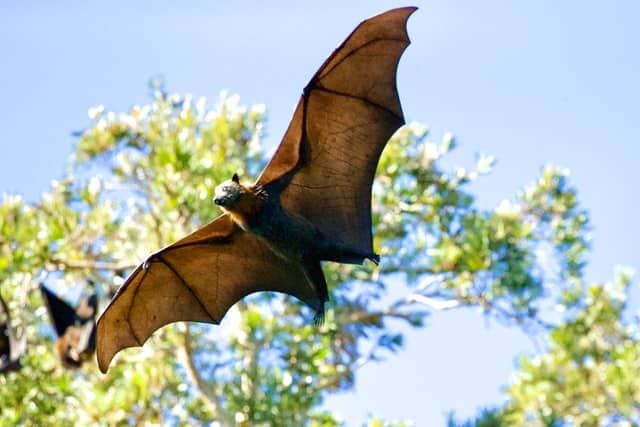
Ōpe‘ape‘a, a subspecies of the North American hoary bat, is exclusive to Hawaii and holds the status of a federally endangered species. Its Hawaiian name, meaning “half-leaf,” derives from the bat’s wing shape, resembling the lower portion of a taro leaf.
Bat Pioneers
While more prevalent than commonly perceived, ōpe‘ape‘a has only recently become a subject of intensified research. Genetic evidence suggests that bats colonized the Hawaiian Islands relatively recently—initially arriving about 10,000 years ago, with secondary colonization as recent as 800 years ago.
Like all bats, ōpe‘ape‘a is nocturnal, but they don’t take refuge in caves. These bats are solitary roosters in trees, attaching themselves to the tips of branches on tall trees. Weighing a mere ½ oz, these nimble acrobats prove challenging to locate and study. Mist nets, commonly used for songbirds, prove ineffective as bats quickly learn to avoid them. Hawaii boasts diverse and captivating wildlife.
The most efficient method for detecting ‘ōpe‘ape‘a involves ultrasonic bat detectors capturing the bats’ vocalizations during their travels and hunts. Advances in ultrasonic detection technology have facilitated the study of bats, and Hawaiian researchers are actively delving into unraveling the mysteries surrounding these fascinating mammals.
On Hawai‘i Island, researchers noted more frequent ‘ōpe‘ape‘a detections during the summer at lower elevations, suggesting abundant food sources or reduced stress for newborns and lactating mothers in warmer temperatures. Mother ‘ōpe‘ape‘a gives birth to pups, typically a set of twins, in May or June, staying with them until they are 6-7 weeks old.
Bat Pups
When the young pups are still in their infancy, the mother carries them along on her nightly hunts. As they mature enough to secure the roosting site on their own, she leaves them safely in the tree until they reach an age where they can join her in flight and learn the art of hunting. ‘Ōpe‘ape‘a’s primary diet consists of moths, supplemented with mosquitoes, beetles, crickets, and termites.
As temperatures cool, researchers on Hawai‘i Island observed heightened bat activity at higher elevations. It remains uncertain whether this implies a seasonal “migration” up and down the mountain. While movement between islands is not well understood, bats are present on all the central Hawaiian Islands, suggesting historical inter-island movement.
On Maui, researchers have confirmed the presence of ‘ōpe‘ape‘a in Haleakalā National Park, both at the summit and within the crater. These flying insectivores are occasionally seen at sea level, indicating a likelihood of their presence in local neighborhoods.
When and Where to Spot Them
To catch a glimpse of bats, particularly during twilight, focus on areas along pasture edges, pastures, and clearings. Bats exhibit a zigzag pattern as they snatch insects, while rare birds returning to roost follow a more direct route.
Threats to ‘ōpe‘ape‘a remain unclear, but collisions with structures like communication towers, wind turbines, and barbed wire are identified as a cause of mortality. This may occur as bats momentarily disable their echolocation to consume an insect.
To contribute to the protection of this endangered species, safeguard roosting sites in your area by delaying the cutting of tall trees until after the pupping summer season. If installing a fence in a pasture, opt for barbless wire on the top strand to prevent entanglement with hunting bats. If you discover a deceased bat on Maui, contact Fern Duvall, Wildlife Biologist with the Department of Land and Natural Resources. Your involvement can aid scientists in unraveling more about the genetics and behaviors of this enigmatic creature—far more fascinating than frightening.
Hawaiian Monk Seal And Northern Elephant Seal
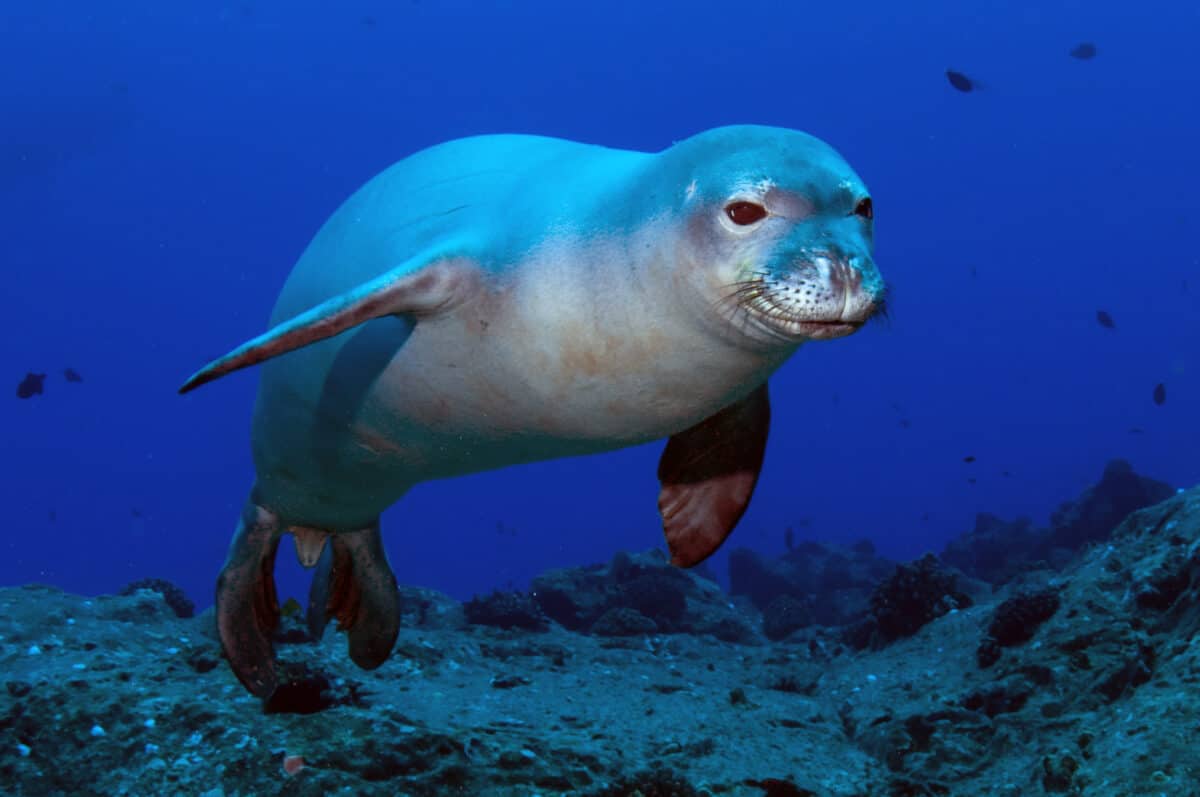
The Hawaiian monk seal is an extremely rare species, with only a few hundred remaining. It is only found in Hawaii and can sometimes be seen resting on the beaches. However, visitors are asked to respect their privacy and keep a minimum distance of 45 meters to avoid disturbing them.
These seals will come ashore to relax and give birth, so it is especially important not to disturb the vulnerable seal pups. It is also important to keep pets away from the Hawaiian monk seals as they are susceptible to canine diseases.
The northern elephant seal is quite large in size and the males are known for the loud noises they make using their proboscis (elongated nose). Unlike the Hawaiian monk seal, the northern elephant seal has a wider distribution and is not currently under immediate threat.
The Indian Mongoose
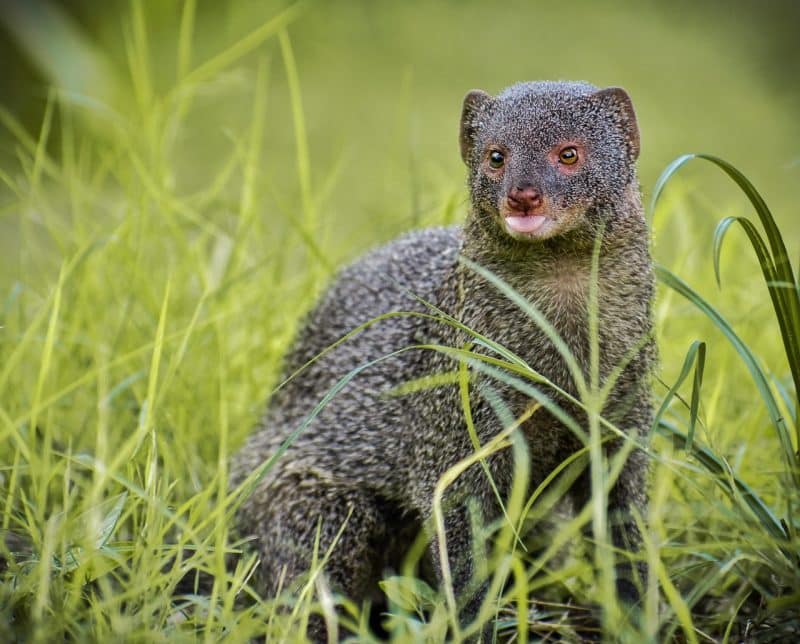
The Indian mongoose was brought to Hawaii in 1883 with the purpose of controlling the rat population in sugar plantations. However, this decision turned out to be a major mistake, as the mongoose population quickly multiplied and spread across the islands. These creatures, resembling weasels, grow to an average length of 26 inches, with a tail as long as their brown bodies. They also have pointed noses and rounded ears.
Mongooses pose environmental risks in Hawaii. They are a threat to ground-nesting birds and endangered island turtles and their hatchlings and eggs. The predation by Indian mongooses has resulted in a significant decline in the populations of Hawaiian crows, Hawaiian geese, and other birds native to the archipelago. Thus, accidental introduction of mongooses has had long-lasting and harmful effects on the unique wildlife found in Hawaii.
Axis Deer And Mule Deer
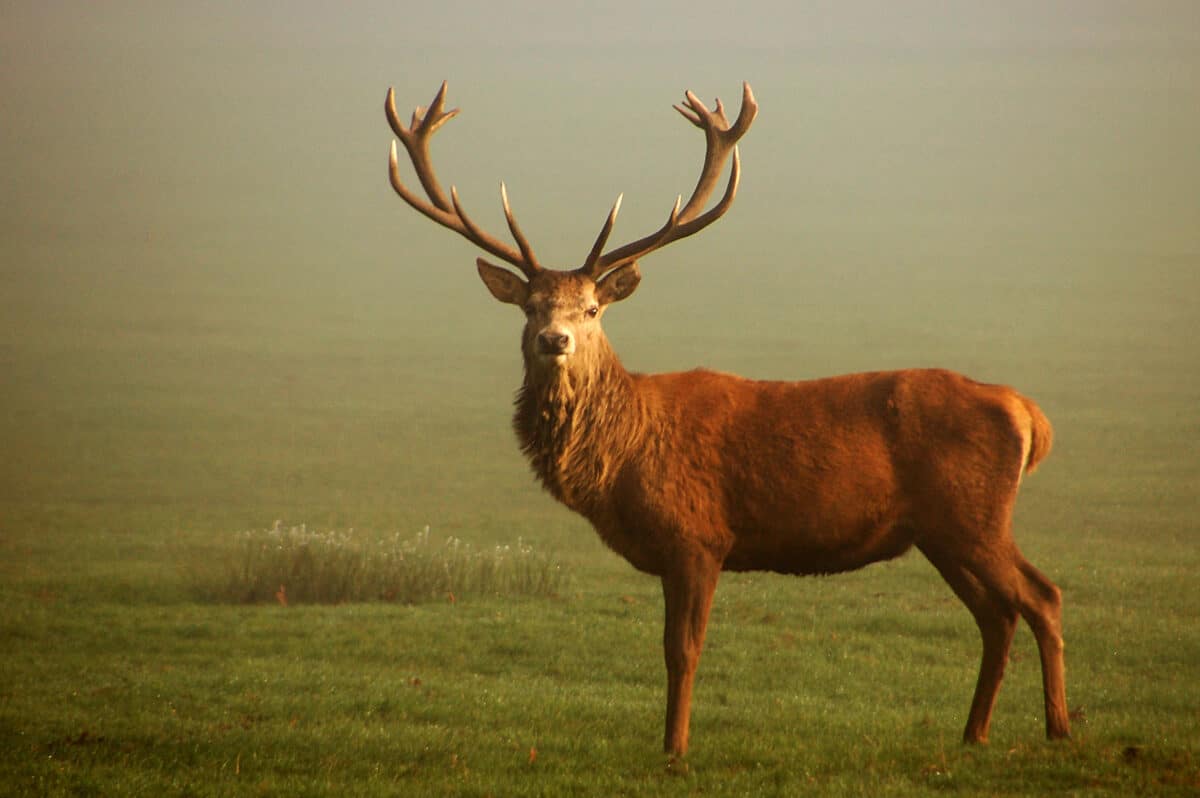
The axis deer, also known as chital, originates from the Indian subcontinent and is well-known for its spotted coat, calm behavior, and graceful demeanor. These captivating qualities have made it popular in various countries around the world.
The axis deer now appears in the list of animals that inhabit the islands. It was introduced to Hawaii when King Kamehameha V received a gift from Hong Kong during his reign over the Kingdom of Hawaii from 1863 to 1872. Now, the Hawaiian island of Lanai is home to many axis deer.
The mule deer, a species of deer native to western North America, was introduced to Kauai Island in Hawaii by humans. This has led to a large mule deer population on the islands, further contributing to the fascinating variety of wildlife in Hawaii.
The Feral Wallaby
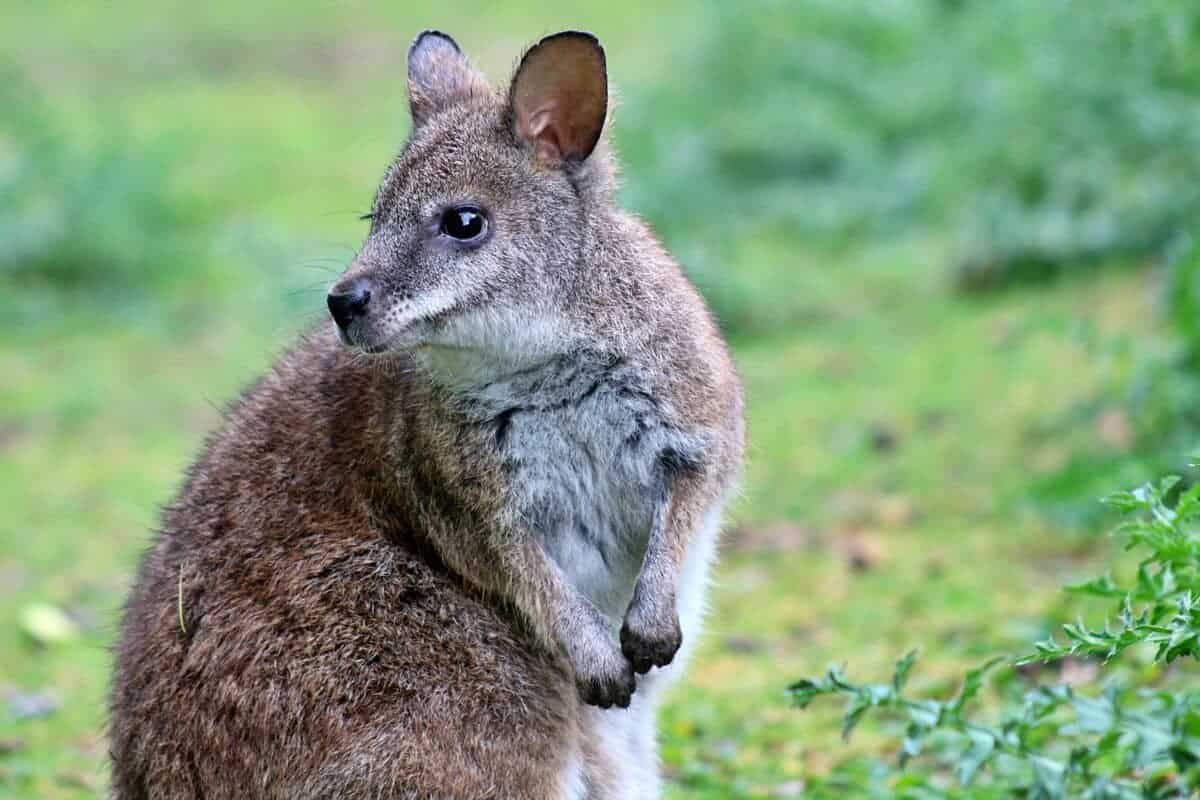
Humans brought wallabies from New Guinea and Australia to Hawaii. They were originally brought to a zoo, but in 1916, a few brush-tailed rock-wallabies managed to escape. They started breeding in the wild and now there is a population of wild wallabies in Kalihi Valley on Oahu Island. Unfortunately, wallabies are classified as Near Threatened by the IUCN.
Hawksbill Sea Turtle
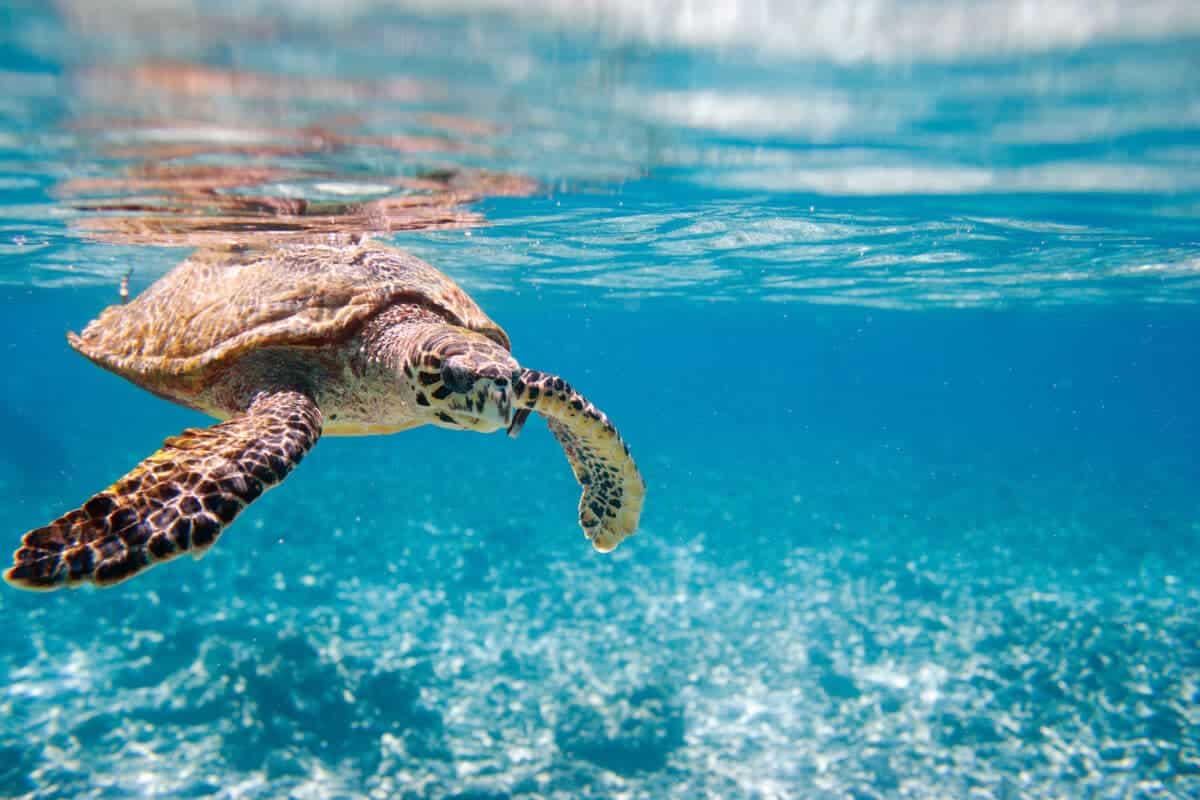
Hawaii is the habitat of the hawksbill sea turtle, known for its preference for sea sponges and frequent presence in coral reefs. Despite their tendency to move around the ocean regularly, these defenseless turtles are facing a severe threat due to relentless hunting for their ornamental shells, resulting in their critical endangerment. Observing this remarkable wildlife in Hawaii is truly an awe-inspiring experience.
The hawksbill turtles are currently designated as Critically Endangered by the IUCN, the global authority on the status of the natural world. Alongside Kemp’s Ridley, they are considered among the most endangered of the seven sea turtle species, with only approximately 8,000 nesting females remaining worldwide.
In addition to these turtles, Hawaii is home to the Hawaiian Black Crowned Night Heron (Nycticorax nycticoras), also known as Auku’u, perched on a lava rock in the Pacific Ocean off the coast. This majestic bird is engaged in fishing for its prey. Such glimpses of wildlife in Hawaii showcase the incredible biodiversity and natural wonders found in the region.
Seabirds of Hawaii
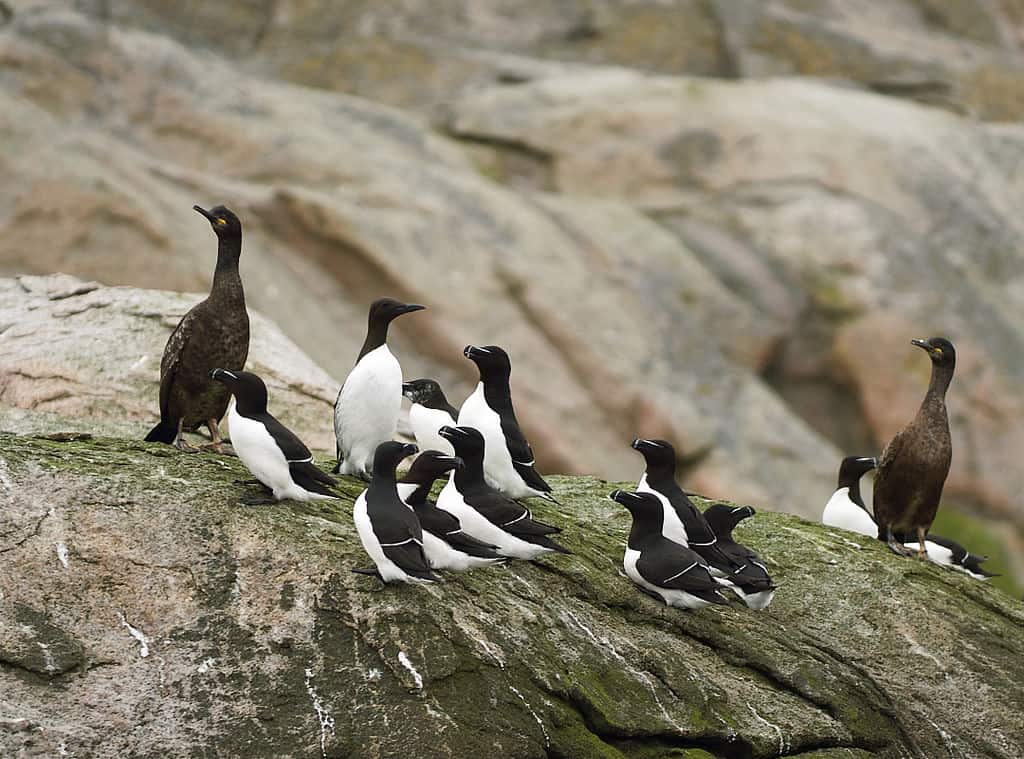
Speaking of wildlife in Hawaii, there are many unique avian species found in the archipelago. Hawaii, once a hub of endemism, boasted approximately 113 endemic bird species. Regrettably, these birds are now among the most threatened species on the planet due to human activities. Since European colonization, the archipelago has lost a total of 71 bird species.
Hawaiian birds can be intriguingly categorized into sea birds and forest birds, depending on their habitat. Noteworthy among the sea birds are the great frigate birds, Laysan albatrosses, shearwaters, noddies, and red- and white-tailed tropic birds.
Summary of Wildlife in Hawaii
I hope you have enjoyed this blog and have learned a thing or two about Wildlife in Hawaii! There is so much to discover beyond the beautiful mountains and beaches. If you enjoyed this blog, you might be interested in the US in general or in Wildlife in Colorado.
After reading that blog, we are sure you’re keen on adventuring in Hawaii! If you want to go diving with dolphins, take a look at Dolphin Excursions.
Frequently Asked Questions (FAQs)
Hawaii is home to a diverse range of wildlife, including marine species like dolphins, sea turtles, and seals, as well as various bird species and introduced mammals like deer and mongoose.
Hawaii does not have native land predators like big cats or wolves. The only native land mammal is the Hawaiian hoary bat. However, introduced species like feral cats and rats have become predators and pose threats to native wildlife.
The biggest wild animals in Hawaii include marine species like humpback whales, which migrate to Hawaiian waters, and the Hawaiian monk seal, which is the largest native seal species in the region.
Hawaii has relatively few poisonous creatures. While some introduced species like the brown widow spider and certain species of centipedes can deliver painful bites, the overall risk of encountering poisonous creatures in Hawaii is low compared to other regions.
Join our Forum for free today!

- Third Elk Incident in Two Weeks in Estes Park, Colorado and How to Stay Safe - July 4, 2024
- 17 Animals That Mate For Life - June 24, 2024
- 13 Animals That Lay Eggs (Some Might Surprise You!) - June 16, 2024



